Key takeaways:
- Film photography emphasizes a tactile, deliberate approach, fostering a deeper connection with the subject and a sense of nostalgia.
- Digital photography offers immediate feedback, allowing for spontaneous creativity and the ability to capture numerous moments without constraints.
- Each medium teaches valuable lessons; film encourages patience and thoughtful composition, while digital promotes spontaneity and experimentation.
- The aesthetic qualities of film, such as unique grain and color rendition, often evoke emotions that digital cannot fully replicate.
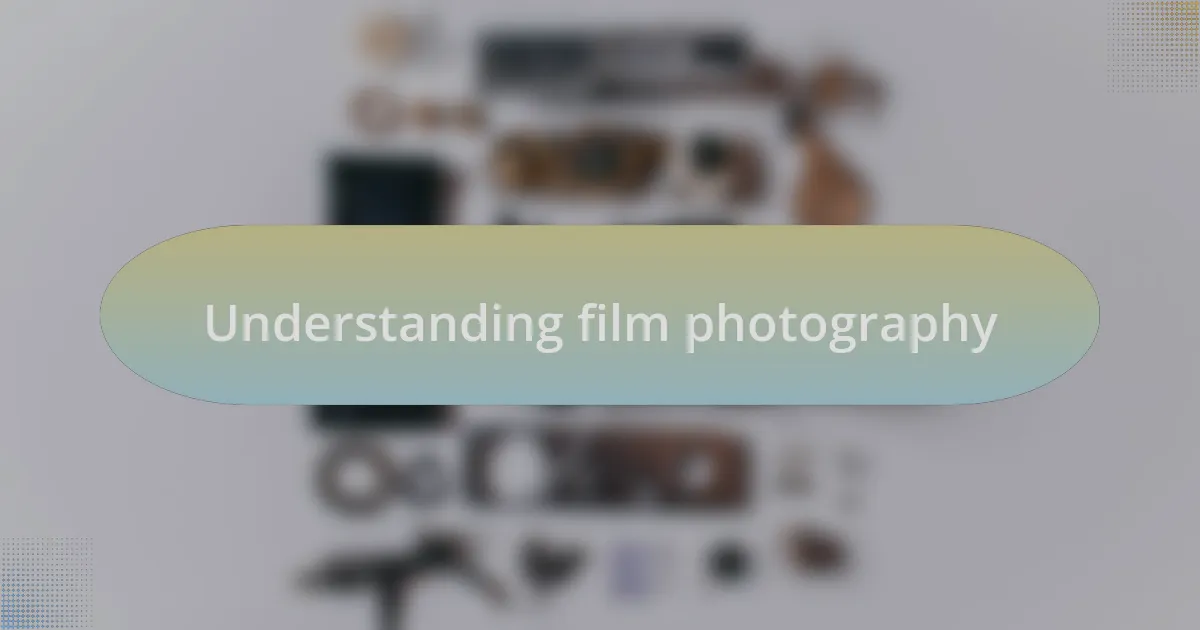
Understanding film photography
Film photography is a captivating blend of art and science, where light meets chemical reactions on a strip of celluloid. I still remember my first roll of 35mm film—I was anxious, excited, and a bit unsure of how it would turn out. The anticipation each time I popped into the darkroom to develop those images was like waiting for a surprise reveal; would I have captured something magical or a big disappointment?
One of the most profound aspects of film is its tangible nature. When I hold a negative in my hands, it feels like part of a memory, an artifact of moments that are elusive yet preserved. Have you ever felt that thrill as you gear up for a shoot, knowing you have a limited number of exposures? It forces you to be intentional, thoughtful, and creative with every single click of the shutter.
Additionally, the aesthetic quality of film—its unique grain and dynamic range—adds character that digital often struggles to replicate. I recall a summer afternoon spent photographing friends in soft golden light, and how the images captured not just their faces but the atmosphere of joy and nostalgia. Isn’t it fascinating how a simple process can evoke such deep feelings? For me, that’s what makes film photography a timeless art form worth understanding.
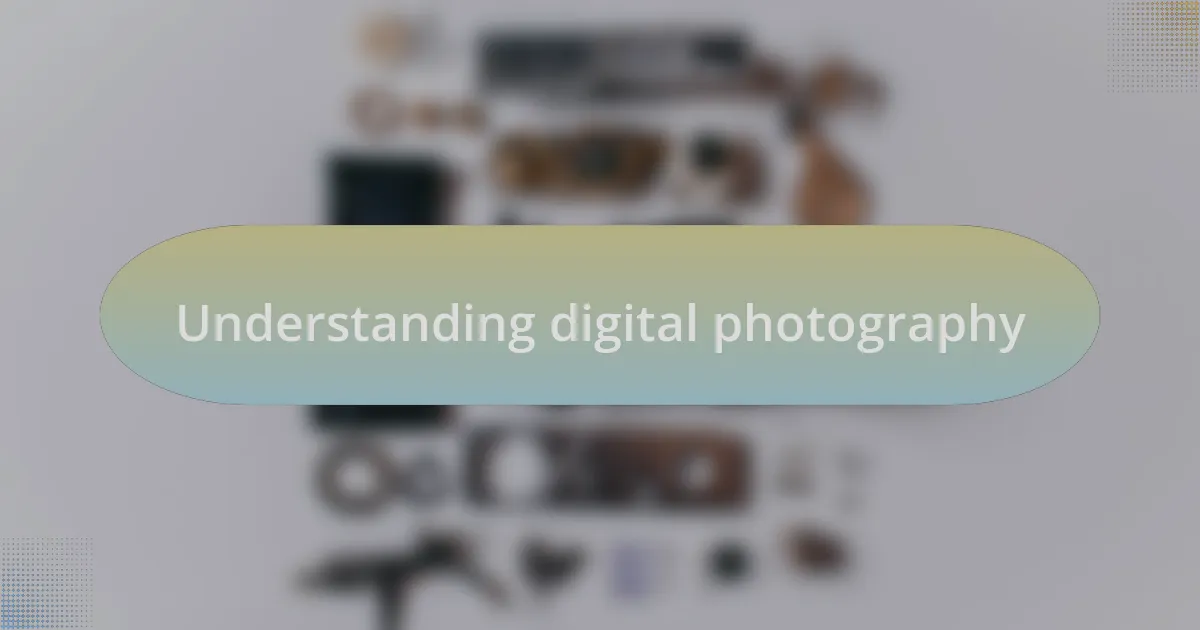
Understanding digital photography
Digital photography has transformed how we capture and immortalize moments, offering an immediacy that is hard to match. I still vividly recall the first time I snapped a photo on my digital camera; the excitement of seeing the image instantly on the screen was exhilarating. It felt like opening a gift from myself, where every click could be reviewed and adjusted on the fly, providing a different kind of creative freedom.
One of the remarkable features of digital photography is its ability to effortlessly manipulate images through software. I remember spending hours experimenting with editing tools to enhance my photos, discovering how simple adjustments could completely change the mood of an image. Have you ever wondered what it feels like to unleash your creativity while navigating the endless possibilities of post-processing? It opens up a whole new world of artistic expression that wasn’t as accessible in the film days.
Furthermore, the advancements in digital technology, such as high ISO capabilities and fast autofocus systems, have made capturing fleeting moments easier than ever. I recently attended a friend’s wedding, and my digital camera allowed me to capture the laughter and tears of the day without worrying about lighting conditions. It’s this adaptability that makes digital photography an incredibly powerful tool, one that encourages spontaneity and allows for the unexpected magic of life to be preserved beautifully.
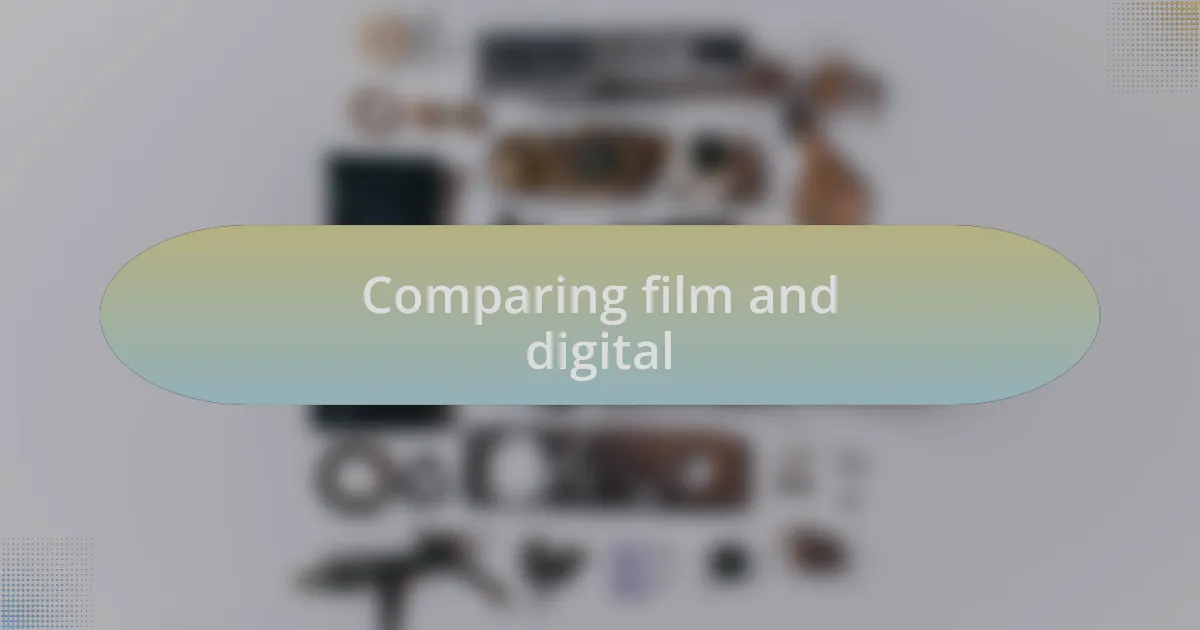
Comparing film and digital
When comparing film and digital photography, the tactile nature of film often evokes a sense of nostalgia that many longtime photographers cherish. I will never forget the thrill of loading a fresh roll of film into my camera; it felt like embarking on a creative adventure, each frame precious and finite. How different it is, I think, from the seemingly endless shots I can take with a digital camera—each click feels like a missed opportunity to capture something truly special with film.
Digital photography undoubtedly offers convenience, allowing for rapid-fire shooting without the worry of running out of film. However, there’s something about the deliberate process of using film that encourages a deeper connection with the subject. I remember a serene moment at the beach, where each click felt significant—I took my time to compose the shot, knowing I only had a limited number of exposures. Isn’t it fascinating how the constraints of film can lead to a more thoughtful approach to capturing images?
Then there’s the aesthetic quality that film presents, often described as having a warmth and depth that some claim digital can’t replicate. I once printed a film photograph on textured paper, and the result just felt alive—the colors seemed richer, the shadows more pronounced. Have you ever experienced that earthy, nostalgic quality in a printed film image? It’s a reminder that the medium influences not just how we take photos, but how we feel about them long after the moments have passed.
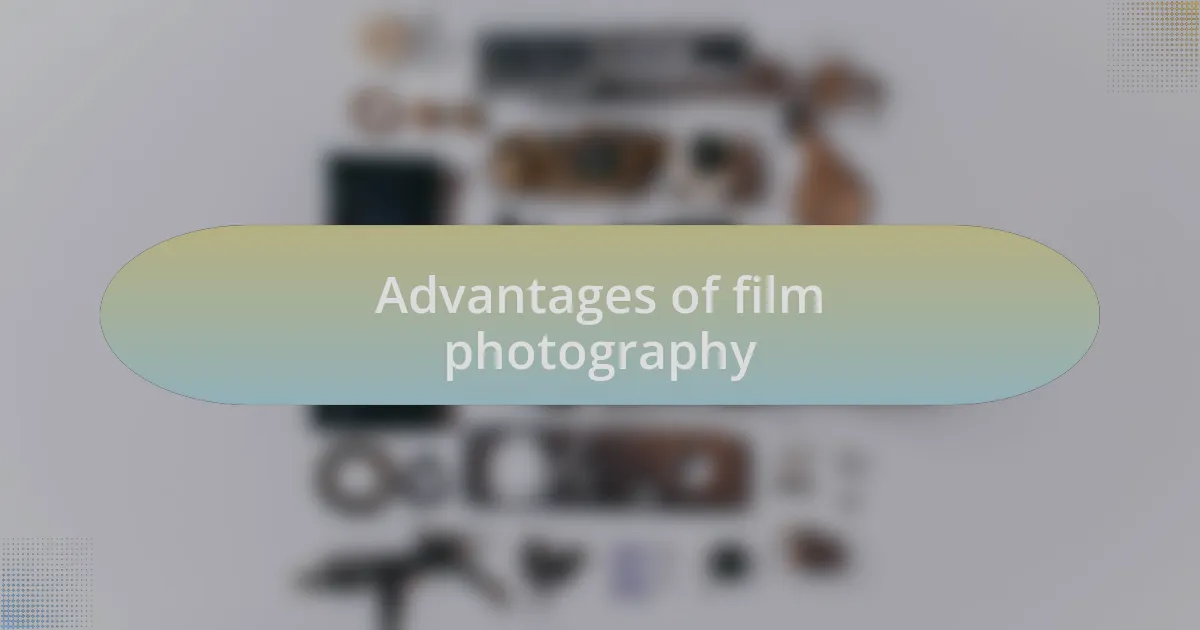
Advantages of film photography
There’s something beautifully raw about film photography that draws me in. Each shot carries an unpredictability—like that one summer evening when I took my camera to a family gathering. I snapped a series of portraits with black-and-white film, and the grain in those images added a layer of emotion that I still can’t reproduce digitally. Do you ever wonder how much more expressive a photograph can be when it’s shaped by the nuances of film?
Another advantage of film photography is its unique color rendition. I recall a vibrant autumn day when I shot a roll of slide film. The colors bloomed on the prints in ways that felt almost magical—the fiery reds and golden yellows had a vivacity that, to this day, digital editing cannot perfectly replicate. Is it just me, or does the way film captures light and hue feel like an artistic collaboration between the photographer and the medium itself?
Lastly, let’s talk about the tangible nature of film. I can remember the anticipation I felt while waiting for my developed prints—there was a physical connection to the process that digital seldom offers. Holding a photograph in my hands evokes a sense of pride and nostalgia, a contrast to scrolling through pixels on a screen. Doesn’t the tactile experience of film make the final result feel all the more rewarding?

Advantages of digital photography
When it comes to digital photography, one of the most significant advantages is the immediate feedback it offers. I clearly remember the thrill of capturing a breathtaking sunset digitally. After taking a shot, I could quickly check the image, adjust the settings, and take another if needed. This instant gratification allows me to refine my technique on the spot, something I couldn’t do with film. Isn’t it liberating to experiment and see results in real time?
Another standout benefit is the sheer volume of photos you can take without worrying about costs or development time. I once spent an entire day at a bustling street fair, capturing candid moments with my digital camera. The ability to snap hundreds of images meant I could document every detail, from joyful expressions to snippets of conversation. Have you ever felt anxious about running out of film? With digital, the world feels more open and accessible; I can photograph until my heart’s content without financial constraints.
Lastly, digital photography excels in convenience and versatility. I think back to a recent trip where I effortlessly shared my photos online with friends and family. The ability to edit, enhance, and instantly share images across platforms enriches my creative process. Do you also appreciate how digital tools can help us to elevate our artistry? This versatility not only applies to sharing but also to post-processing, where I can transform a simple snapshot into something extraordinary with just a few clicks.
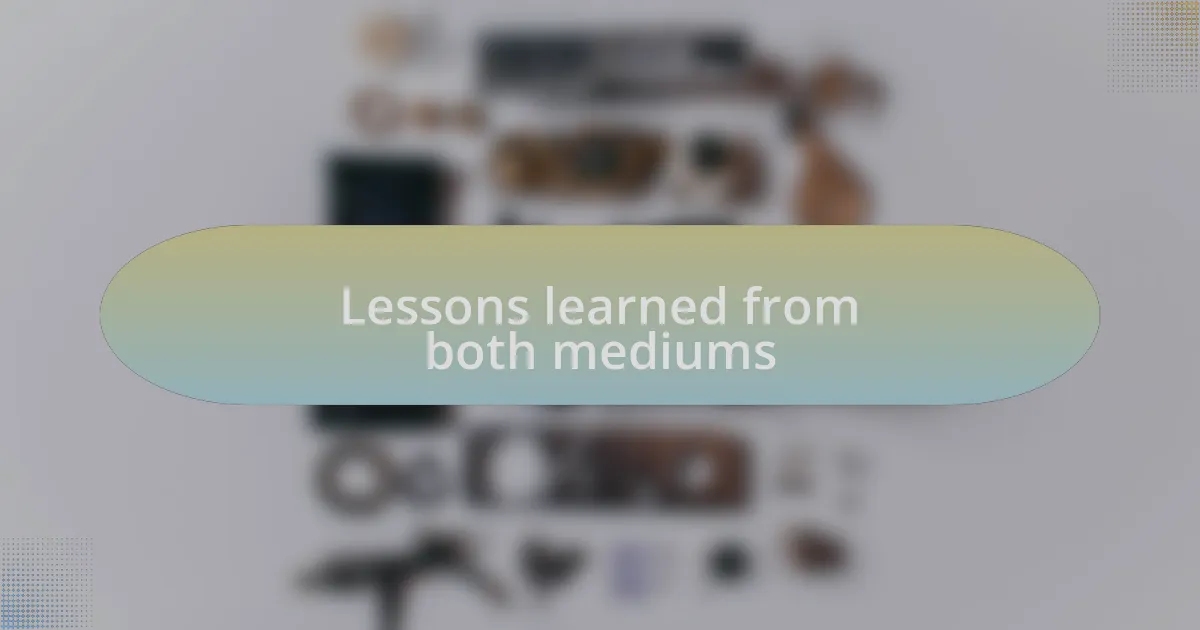
Lessons learned from both mediums
In my journey through photography, I’ve learned invaluable lessons from both film and digital mediums that have shaped my artistic perspective. With film, I often found myself waiting in anticipation as I developed my images, a process that taught me patience and the importance of deliberate composition. I remember the excitement of holding a freshly printed photograph, feeling both the weight of the moment and the satisfaction that came from careful planning.
On the other hand, digital photography taught me to embrace spontaneity. There was a day I wandered through a local park, feeling inspired by the ever-changing light. With my digital camera, I could shoot freely without worrying about whether I was burning through my film. This liberating experience opened my eyes to capturing those fleeting moments that would have previously slipped away unnoticed. Don’t you think the ability to seize the unexpected is one of the best parts of photography?
Combining the lessons from both mediums has truly enriched my photographic approach. I’ve learned that while digital gives me the freedom to experiment, the discipline instilled by film has encouraged me to think critically about each shot. The interdependence of these lessons reminds me that in photography, like life, the blend of patience and spontaneity often leads to the most rewarding outcomes.